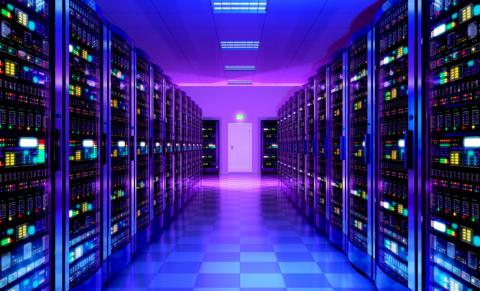The history of the server

The mainframe has performed the role of first servers
The server is an electronic device intended for maintenance access to the local or wide area network (files, data, databases, applications). The history server cannot be described only by a sequence specific dates as initially their functions were performed by large computers (mainframes), and then personal computers, then again separate computing system.
Before the advent of the personal computer in the late 70-ies of the last century, the functions of the devices designed to process and distribute data, perform powerful computing machines that occupied the space from several rooms to entire buildings. They were called mainframes, which translated to English sounds like "main stand". Managed the mainframe operators via a connected keyboard and alphanumeric displays.
Modern server
The problem of using mainframes as analogues of modern servers was the fact that their manufacturers (Hitachi, IBM, Amdahl, and others) used their own, incompatible communication protocols. Users had to choose only one manufacturer and only use its hardware and software. Naturally, the interaction between different servers to provide a wider network of data exchange was impossible in principle.
With the advent of the first personal computers, users are gradually moving away from using mainframe, using servers easy PC. Moreover, the compatibility of most personal computers together enables users to organize, network and interact.
Components of a modern server
However, further increase in the number of personal computers used as servers, in fact, such as personal computers, led to the fact that computing the latter was sorely missed. A relatively weak machine can't cope with all the time and increasing data streams. I had to think again about the transition to centralized management of redistribution of information.
Initially, the first servers in their present form, which appeared in late 80-ies of the last century, performed the role of data warehouses. They were called file servers. Through file servers could not only remotely store their data but also share them with other users connected to the same network.
With the development of the global Internet appeared the telecommunication servers. The first Internet server working, 6 August 1991. Then it was adopted a single standard for web pages WWW (World Wide Web). By November of next year, the Internet consisted of 26 servers. They were quite powerful at that time computer that worked offline, does not require a permanent human presence.
At the end of 1993 the number of Internet servers exceeded 200 units, and the beginning of 1995, they became countless. Modern servers such as IBM System x3850 and others operate tens and hundreds of terabytes of information per second.





